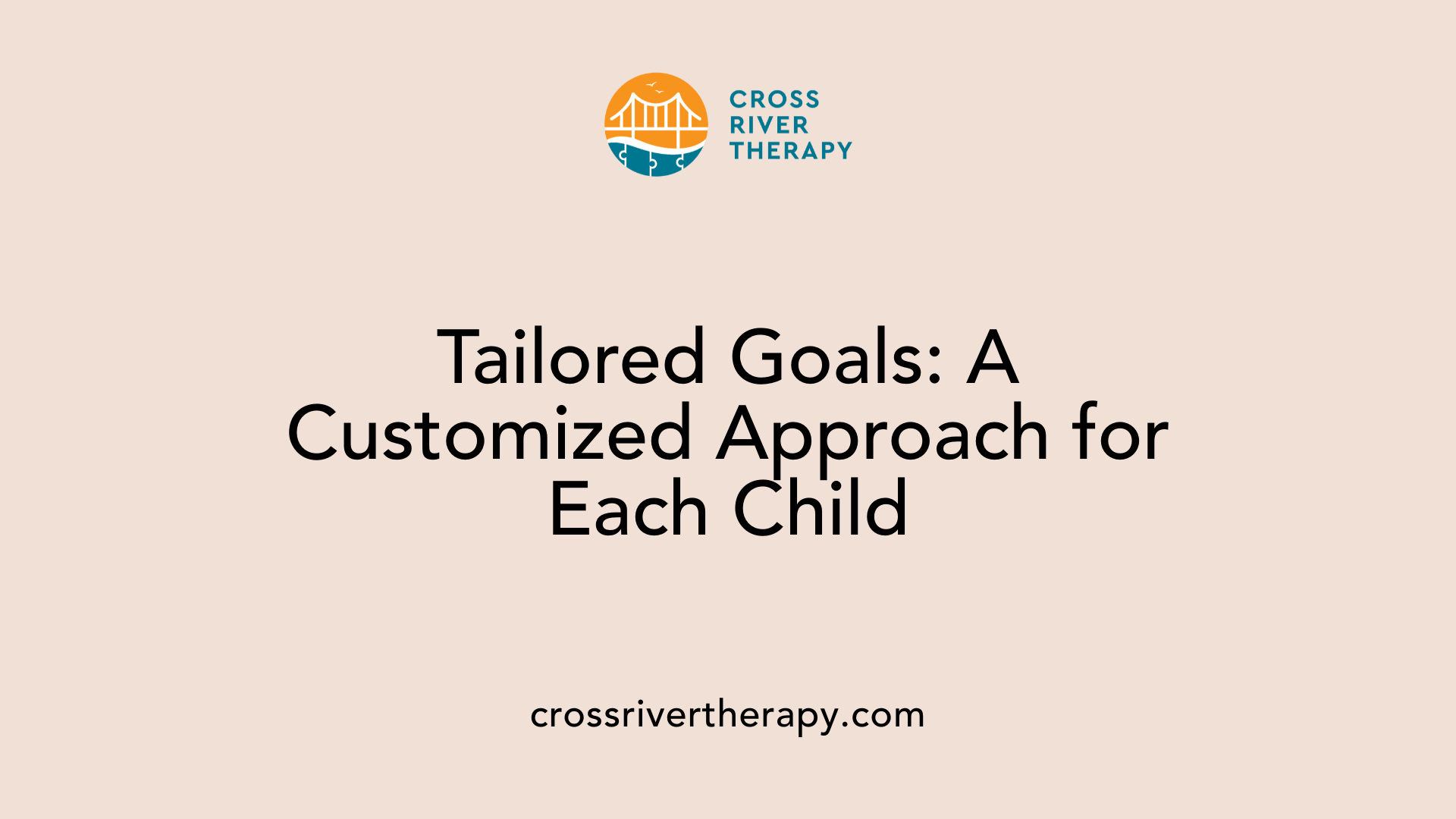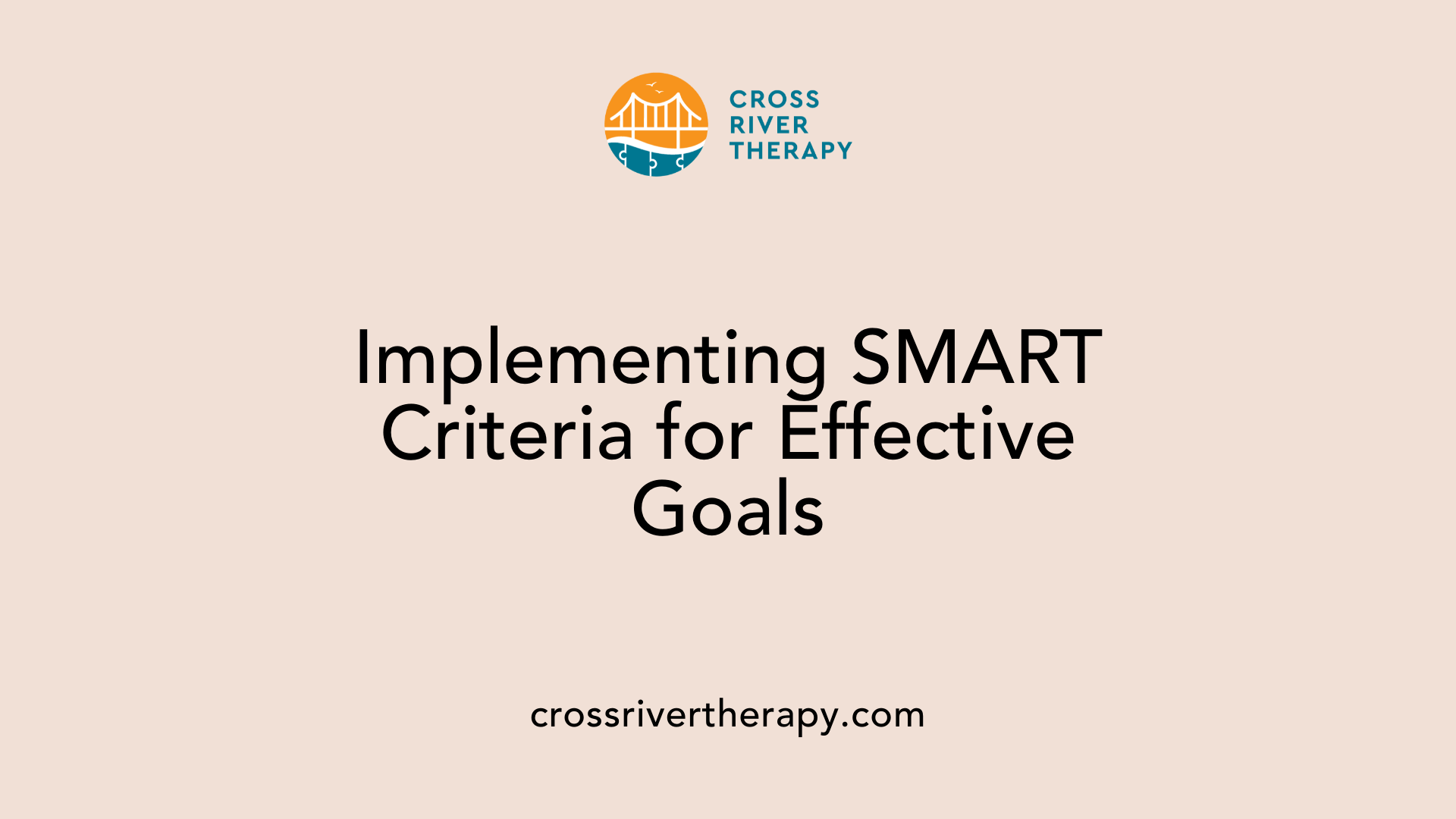How to Establish Clear Goals for ABA Therapy Sessions
Crafting Effective ABA Therapy Session Goals
Introduction to Goal Setting in ABA Therapy
Establishing clear and effective goals is a foundational component of Applied Behavior Analysis (ABA) therapy, aimed at optimizing therapeutic outcomes for individuals, particularly children with autism. These tailored goals serve as a roadmap, guiding interventions and marking progress. This article will provide an in-depth exploration of how to establish such goals, applying evidence-based practices to enhance therapy success.
The Importance of Tailored Goals in ABA Therapy

Individualized Goals
In Applied Behavior Analysis (ABA) therapy, goals are intricately designed to meet the specific needs of each child. Instead of generic objectives, individualized goals focus on manageable tasks. For instance, rather than simply aiming for a child to follow directions, a specific goal might be for them to independently complete toileting or use utensils during meals. This specificity ensures that progress can be systematically monitored and celebrated.
Role of Collaboration with Caregivers and BCBAs
Effective goal setting requires collaboration among ABA therapists, Board Certified Behavior Analysts (BCBAs), parents, and educators. This teamwork builds a comprehensive roadmap by incorporating the child’s strengths and challenges, as identified through detailed assessments. Family involvement is crucial, as it helps align therapy goals with daily routines and family values, enhancing the child’s ability to apply learned skills in various settings.
Relevance of Tailored Goals
Tailored goals play a vital role in guiding therapy sessions and facilitating tracking of progress. By employing the SMART criteria—Specific, Measurable, Achievable, Relevant, and Time-bound—therapists can ensure that each goal is clear and focused. Regular reviews of these goals allow for adjustments based on the child’s development, ultimately maximizing the effectiveness of ABA therapy and promoting meaningful growth.
Understanding SMART Goals in ABA Therapy

Definition of SMART goals
SMART goals in ABA therapy are defined by five essential criteria: Specific, Measurable, Achievable, Relevant, and Time-bound. These elements provide a structured framework for creating individualized objectives that are tailored to each child's unique needs. For example, instead of a broad goal like "improve communication," a SMART goal could specify, "The child will use two-word phrases to request items during snack time with 80% accuracy over four consecutive sessions."
Benefits of SMART criteria
Utilizing the SMART criteria brings numerous benefits to ABA therapy.
- Clarity: Goals become clearer and easier to understand for all parties involved, including parents, therapists, and educators.
- Tracking Progress: By measuring specific outcomes, it’s easier to observe improvements and adjust strategies when necessary.
- Motivation: Achievable goals encourage children to make small victories, which builds confidence and fosters motivation to learn.
General application in therapy
In practice, SMART goals can cover various areas of development such as communication, daily living skills, and social interactions. For instance, a social skills goal might read: "The child will identify and express emotions in peer interactions in 3 out of 5 observed situations by the end of the month." This targeted approach not only ensures that therapy sessions are structured but also allows for meaningful assessments of the child's growth and adaptation over time.
Setting effective ABA goals ensures that each session is purpose-driven, thus optimizing the therapeutic process and outcomes.
Applying SMART Criteria in Goal Setting

How can SMART criteria be applied to defining ABA therapy goals?
The SMART criteria play a fundamental role in establishing effective ABA therapy goals. This approach ensures that goals are Specific, Measurable, Achievable, Relevant, and Time-bound. Here's how each component contributes:
- Specific: Goals need to be well-defined. For instance, rather than stating a goal as simply ‘improve communication’, a specific goal would be ‘requesting a snack using three-word sentences’.
- Measurable: This allows progress to be tracked objectively. Measurable goals could involve determining the number of successful requests the child makes each week.
- Achievable: Setting realistic goals is crucial. Goals should consider the child’s current developmental level, ensuring they can realistically achieve them with support.
- Relevant: Goals must align with the child’s unique needs and family values. A relevant goal might be focusing on using communication skills in everyday situations, such as at home or school.
- Time-bound: Establishing deadlines adds accountability. For example, aiming to master a specific skill within a three-month period maintains a clear timeframe for assessment.
Collaboration in goal setting
Collaboration is vital in the development of SMART goals. Involving ABA therapists, BCBAs, parents, and educators allows for a holistic approach that is tailored to the child’s unique circumstances. This collaborative process fosters consistency across different environments, making the skills learned more transferable.
Measuring progress and accountability
Regular data collection and review sessions are critical for tracking the effectiveness of the SMART goals. By consistently measuring outcomes, adjustments can be made based on the child’s progress and evolving needs. This structured approach not only keeps the therapy focused but also boosts motivation by allowing families to celebrate small victories, reinforcing the overall developmental journey.
Creating Measurable Goals: The Key to Success
What are measurable ABA goals?
Measurable ABA goals are specific, quantifiable objectives that guide the development and implementation of intervention plans in applied behavior analysis. They focus on observable behaviors and skills that can be tracked over time, allowing for accurate assessment of progress. These goals should be clearly defined, individualized to each learner’s needs, and achievable within a set timeframe.
Characteristics of measurable goals
- Specific: Clearly describes the desired behavior or skill.
- Measurable: Uses quantifiable metrics to assess progress.
- Achievable: Realistic and attainable based on the child’s current abilities.
- Relevant: Aligns with personal and family values, addressing significant areas in the child’s development.
- Time-bound: Outlines a timeframe for achieving the goals.
Role in behavior tracking
Establishing measurable goals facilitates consistent data collection, which is crucial for tracking the effectiveness of ABA interventions. This systematic approach enables therapists to make necessary adjustments based on the child’s progress. By breaking down larger goals into smaller, manageable steps, practitioners can systematically evaluate the effectiveness of their strategies while reinforcing children’s successes.
Impact on therapy success
Measurable goals significantly influence a child’s progress in therapy. They provide a clear focus for each session, ensuring structure and purpose. Regular reviews and adjustments based on real-time data keep the therapy aligned with the child's evolving needs. Ultimately, this enhances the child's independence and overall quality of life, promoting meaningful behavior change.
Involving Caregivers in the Goal-Setting Process
Role of caregivers and parents
Caregivers and parents play a pivotal role in the goal-setting process for ABA therapy. Their involvement not only informs the types of goals chosen but also ensures that these objectives reflect the child's unique interests and challenges. Collaboration with a Board Certified Behavior Analyst (BCBA) facilitates the creation of specific and achievable objectives tailored to the child's needs.
Aligning goals with family values
Effective goal setting involves integrating family values and routines into therapy goals. Parents and caregivers can contribute insights into what skills are most relevant to their child's daily life. For example, if the family's focus is on enhancing communication at home, goals may include specific expressive communication tasks, such as requesting items verbally or using phrases during dinner conversations. This approach reinforces the skills learned in therapy and makes them more meaningful.
Importance of consistency and reinforcement
Consistency is crucial for successful ABA therapy outcomes. Caregivers must apply strategies learned during therapy consistently in everyday situations. Reinforcing progress through natural and developmental milestones allows for a better understanding of the child's improvement. Regular communication with the BCBA facilitates adjustments to goals, ensuring they are always attainable and relevant to the child's growth. The celebration of small victories encourages continued motivation and engagement from both the child and the family.
The Goal of Regular Assessment and Adjustment
Why is regular assessment and adjustment of goals important in ABA therapy?
Regular assessment and adjustment of goals in ABA therapy are crucial due to the evolving needs of each child. As children grow and develop, their strengths, challenges, and areas of focus can change. By continually monitoring progress, therapists can ensure that therapy remains applicable and beneficial.
Changing Needs of the Child
Children's behaviors and abilities can shift rapidly, especially during critical developmental windows. Regular assessments allow therapists to identify new areas of need or to focus on skills that the child is ready to tackle. This responsiveness not only enhances the therapy's effectiveness but also keeps the child motivated.
Importance of Flexibility in Goals
Flexibility in setting and adjusting goals is vital. A static approach may overlook important changes in a child's life that can affect their learning and behavioral needs. For instance, social interactions with peers may evolve, necessitating the addition of social skills goals. The ability to incorporate family input can also ensure that goals align with the child’s home environment and routines.
Methods of Goal Assessment
To support effective adjustments, various methods of assessment are employed:
- Direct Observations: Monitoring behavior in real-time settings to evaluate goal progress.
- Standardized Assessments: Tools like VB-MAPP help track specific skill acquisition.
- Data Collection: Continual collection of data on the child's performance provides concrete evidence of progress.
By establishing and regularly assessing SMART goals, therapists ensure that each session remains structured and purposeful, leading to meaningful outcomes for the child.
Types of Goals in ABA Therapy: A Comprehensive Approach
Skill acquisition and behavior reduction goals
In ABA therapy, skill acquisition goals focus on teaching new abilities, such as learning to independently complete tasks like toileting or using utensils for eating. This is essential for enhancing daily living skills. Conversely, behavior reduction goals aim to decrease negative behaviors, ensuring children can adapt and thrive in various settings. For instance, the goal could be to reduce tantrums during transitions to create smoother daily routines.
Social and communication skill enhancement
Improving social skills and effective communication are core areas of focus in ABA therapy. Expressive communication goals may involve training children to request items verbally or to engage in conversations on topics they enjoy. Receptive language goals ensure children can understand and follow instructions and comprehend interactions, supporting overall communication proficiency. Additionally, fostering social skills like recognizing emotions and participating in peer interactions promotes engaging social experiences.
Generalization in different environments
Generalization goals are vital to ensure that children apply learned skills across different contexts and situations. This includes practicing skills in various environments, such as home, school, and community settings. By encouraging children to navigate public spaces and respond appropriately to community helpers, ABA therapy broadens their understanding and application of essential life skills.
Best Practices for Collaborative Goal Setting

Role of BCBAs and Therapists
BCBAs (Board Certified Behavior Analysts) play a crucial role in developing tailored goals for ABA therapy based on a child’s unique needs. They lead assessments that highlight the child's strengths and weaknesses, ensuring that each goal is relevant and impactful. Therapists implement these goals during sessions, providing direct support and guidance to the child.
Holistic Approach Involving the Child
A collaborative goal-setting process includes not just professionals but also the child and their caregivers. This involvement is essential for creating goals that align with the child’s interests and family values. By actively engaging the child in discussions about their goals, therapists can ensure that therapy remains meaningful and motivating, fostering a greater sense of ownership in the learning process.
Tools for Effective Collaboration
Several tools can facilitate effective collaboration in setting ABA therapy goals. Regular meetings with parents and caregivers help to track progress and adjust goals as necessary. Standardized assessments like the VB-MAPP or ABLLS-R enable objective measure of skills and progress, while data collection during sessions provides ongoing feedback for everyone involved.
| Collaborative Practices | Description | Benefits |
|---|---|---|
| Engaging Parents | Involve parents in the goal-setting process. | Aligns goals with family values. |
| Regular Assessments | Use standardized tools for tracking. | Objective measure of progress. |
| Ongoing Communication | Frequent meetings to discuss adjustments. | Supports tailored interventions. |
Celebrating Progress: The Emotional and Motivational Impact

Importance of Small Victories
In ABA therapy, recognizing and celebrating small victories is essential for the child's progress. These milestones, whether achieving a specific communication goal or mastering a daily routine, serve as stepping stones toward larger objectives. By celebrating each accomplishment, families can reinforce the idea that progress is possible and encourage continued effort.
Boosting Confidence and Motivation
When children experience success, no matter how small, it significantly boosts their confidence. This newfound confidence can lead to increased motivation for tackling new challenges. Therapists and parents can use these moments to highlight the child's strengths, fostering a growth mindset and encouraging them to strive for further achievements.
Role of Celebration in Behavioral Changes
Celebrating achievements during therapy sessions and at home not only promotes positive reinforcement but also enhances behavioral changes. Families can engage in simple celebrations, such as verbal praise, stickers, or small rewards, to acknowledge progress. These gestures can motivate children to maintain their efforts and deepen their engagement with the therapeutic process.
Harnessing the Power of Clear Goals
In conclusion, establishing clear goals in ABA therapy is critical for driving effective therapeutic interventions and ensuring meaningful progress for children with autism. By adhering to SMART criteria and involving caregivers in a collaborative process, therapy can be tailored to the unique needs of the individual, optimizing outcomes and fostering essential skill development. Through continuous assessment, regular adjustments, and the celebration of progress, families and therapists can work hand-in-hand to promote independence and enhance the quality of life, making each therapy session purposeful and impactful.
References
- ABA Therapy Goals: 25 Practical Examples & Timelines
- How to Set ABA Goals for Children with Autism
- How to Set and Achieve ABA Goals: The Essential Guide
- Early Intervention ABA Therapy: Setting Goals for Behavioral Health ...
- ABA Therapy Goals: 25 Practical Examples & Timelines
- Tips for Parents and Caregivers Navigating ABA Therapy for Their ...
- The Role of Family in ABA Therapy: Tips for Parents
- Best Practices for Setting Realistic Goals in ABA Therapy and at Home
- The Art of Writing Effective ABA Programs: How to Write a Good ABA ...
- ABA Binder & ABA Programs



